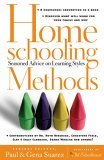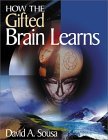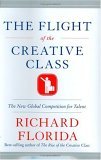|
 Personality
Types Personality
Types 
Personality type can effect how your student is learning too.
A variety of questionnaires have been developed over the years that can
help assess personality type but the most popular questionnaire is the
Myers-Briggs Type Indicator® (MBTI). Myers-Briggs is based on the
work of Carl Jung in his theory of Psychological Types.
The
output from the personality inventory or questionnaire provides an outline
of one of 16 MBTI® Types. The output will be a four-letter type code
like ISTJ or ENTJ. The codes are derived from combinations of the following
preferences in dealing with the External World, Information you receive
to process, Decisions you make and the Structure in which you deal with
the world:
 External World
External World
Introvert/Extravert
Introverts find energy in the inner world of ideas, concepts, and
abstractions. They can be sociable but need quiet to recharge their
batteries. Introverts want to understand the world. Introverts are
concentrators and reflective thinkers.
Extraverts find energy in things and people. They prefer interaction
with others, and are action oriented.
|
|  Information Processing
Information Processing
Sensing/Intuitive
Sensing people are detail oriented, want facts, and trust the facts
they gather.
Intuitive people seek out patterns and relationships among the facts
they have gathered. They trust hunches and their intuition and look
for the "big picture."
|
 Decisions
Decisions
Thinking/Feeling
Thinking people value fairness.
Feeling people value harmony. They focus on human values and needs
as they make decisions. They tend to be good at persuasion and
facilitating differences among group members.
|
|  Structure
Structure
Perceptive/Judging
Perceptive people are curious, adaptable, and spontaneous. They
start many tasks, want to know everything about each task, and find
it difficult to complete a task.
Judging people are decisive, they are planners and self regimented.
They focus on completing the task, only wanting to know the essentials,
and take action quickly. They plan their work and execute their
plan. Deadlines are sacred.
|
 Mutiple
Intelligences Mutiple
Intelligences 
The theory of Multiple Intelligences was researched, developed, and published
by a team of researchers at Harvard University, led by Dr. Howard Gardner.
Its educational applications are far reaching and have led to everything
from expanded classroom lessons to the development of whole schools termed
"Multiple Intelligences Schools." The multiple intelligences defined
by Dr. Gardner are as follows:
 Verbal/Linguistic Intelligence
Verbal/Linguistic Intelligence
This intelligence is responsible for the production of language
including: poetry, humor, storytelling, abstract reasoning, and
the written word.
 Logical/Mathematical Intelligence
Logical/Mathematical Intelligence
This intelligence is associated “scientific thinking.”
Deductive/inductive thinking/reasoning, numbers and recognition
of abstract patterns.
 Intrapersonal Intelligence
Intrapersonal Intelligence
This intelligence involves knowledge of the internal aspects of
self such as: feelings, range of emotional responses, self reflection,
and sense of intuition about spiritual realities.
 Interpersonal Intelligence
Interpersonal Intelligence
This intelligence involves the ability to work cooperatively in
a group and the ability to communicate, verbally and non-verbally
with other people. People highly here are good at working with
others and working on group projects.
 Visual/Spatial Intelligence
Visual/Spatial Intelligence
This intelligence involves the ability to create internal mental
pictures. Deals with such things as the visual arts, navigation,
map-making, and architecture. People highly developed in this
intelligence are good at creating pictures in their mind.
 Musical/Rhythmic Intelligence
Musical/Rhythmic Intelligence
This intelligence involves the ability to recognize and use of
rhythmic and tonal patterns, sensitivity to sounds such as the
human voice and musical instruments.
 Bodily/Kinesthetic Intelligence
Bodily/Kinesthetic Intelligence
This intelligence involves the ability to use the body to express
emotion as in dance, body language, and sports.
 Naturalist Intelligence
Naturalist Intelligence
This intelligence involves the ability to recognize plants, animals,
and other parts of the natural environment, like clouds or rocks.
You
can read more about this topic in Dr. Gardner's books: Multiple
Intelligences: The Theory in Practice & Frames
of Mind: The Theory of Multiple Intelligences.
|
|








